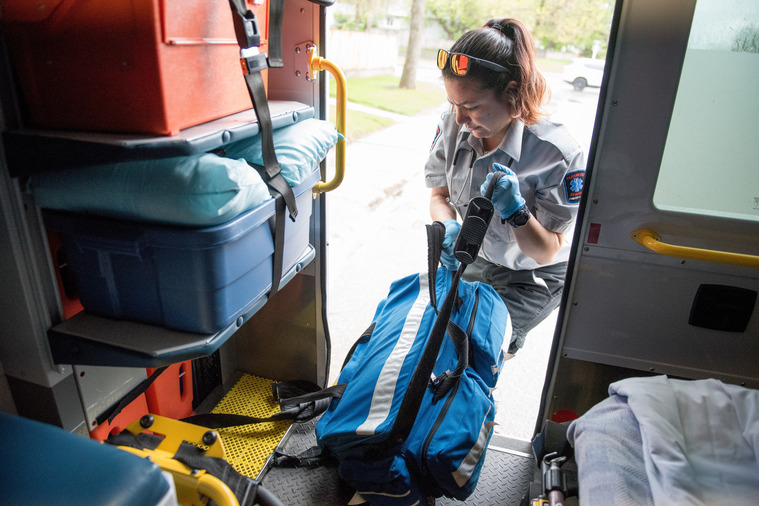Here to care for you: 12-hours with Parkland Ambulance
They are most often seen racing down the street with lights flashing and sirens blaring, en route to the worst moment in someone's life.
“We come to you,” Lyle Karasiuk, public affairs officer with Prince Albert Parkland Ambulance said. Karasiuk himself is a paramedic with 30 years of experience under his belt.
“You call and the next person you see is our people there to deal with your loved one. That is an amazing ability of paramedics.”
May 26 to June 3 is Paramedic Services Week; a time to recognize the roles these men and women play in our community.
Parkland Ambulance has provided service to the area since 1974. It operates 13 vehicles in the second largest service area in the province and responds to nearly 10,000 calls per year. This volume of traffic can lead to what workers call a "chess match" facilitating proper resources to deliver the best patient care possible.
The service is staffed with upwards of seven members at one time. A paramedics day is typically 12 to 14 hours, and can be packed with calls ranging from minor ailments to critical life-and-death situations.
“No two days are the same. No two hours are going to be the same,” Karasiuk said. “We are forced to be adaptable.”
To begin a shift, paramedics gather for operational briefings and perform in-depth checks of their ambulance and supplies. The day is then dictated by calls for emergency assistance, facility transfers, routine training and community projects.
Teams are dispatched in pairs. Senior and junior mixes, and male and female matches, are routinely used. The service responds to an average of 16 to 18 calls per day. They can be periodic, or gruelling back-to-back calls that stretch for hours at a time. A paramedic's adaptability is seen when a call comes through from dispatch. Within seconds, they instinctively jump to the ready and mentally prepare for whatever may lie ahead.
On scene one can witness a paramedic's training. Most have knowledge as deep as doctors.
“We are bringing the emergency room to you," Kelly Straf, 40, a twenty-year paramedic said. "If you are dying on your living room floor, we can come and do the same things that are going to be done [in the emergency room] in your home.”
What draws someone to this line of work is a question that can yield many different replies. Yet, each lands on a simple desire to help those in need.
Straf, who is from Prince Albert, was intrigued by the job after a ride-along in high school.
“This, for me, was the best chance to give back and be involved in the community where you can make a difference,” he said. “Helping people, even in the smallest way, happens every day. It can be holding a hand, or smiling, or telling a joke to somebody who may be down.”
Matt LeBlanc, 27, who has worked as a paramedic for six years, echoed this.
“You are doing the right thing and you are seeing those good outcomes,” he said when asked why he enjoys his career.
LeBlanc added how something as simple as “putting a smile on kids faces when they break their arm” can be tough to do, but when able, “you feel like a million bucks.”
The ability to keep calm and collected during a traumatic incident is crucial. However, paramedics are humans too.
“We may project the image that we are comfortable, even though we are not because it is our job to do that,” Straf explained. “That is in the nature of it. It wouldn’t help if you are in crisis, and I come to mitigate the crisis and you see me in a crisis.”
As a result, pursuing this line of work can be taxing.
“It does affect us,” LeBlanc added. “Whether it is a car accident or…seeing people succumb to their injuries or seeing a life changing injury. It can be tough sometimes.”
Rest and recovery or turning to peers who can sympathize with a situation are common ways to debrief. Exercise, sports, hobbies and turning to support groups are also used to cope.
A deep involvement in the community can also clear one's mind. Parkland paramedics contribute upwards of 1,500 hours of volunteer time a year. This helps to build trust within the community.
It can also provide an opportunity to encounter a patient and learn of their outcome, something not often known.
“It is interesting because everyone has a different story about their experience with paramedics,” LeBlanc said. “We will listen to that story and be like ‘I think I remember you,’ and you are glad to see they are okay.”









